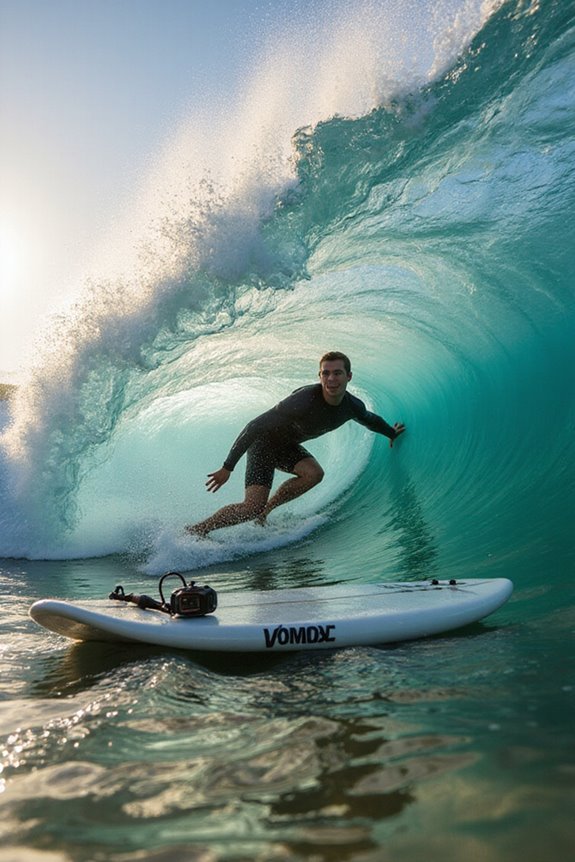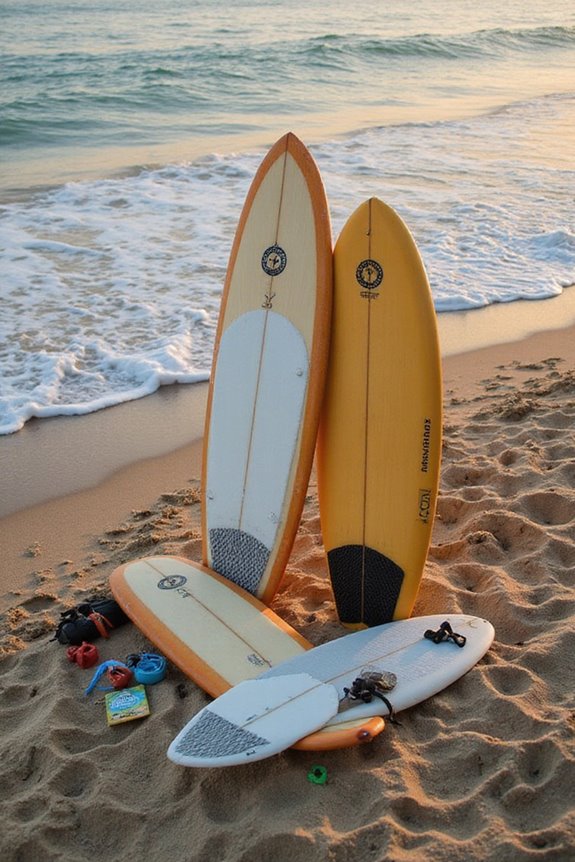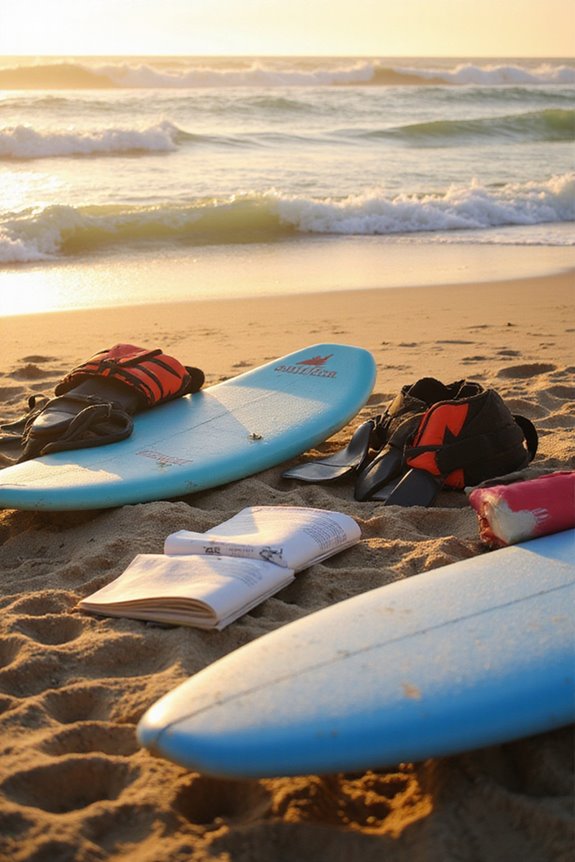Duck diving is an essential surf technique we use to navigate breaking waves. By submerging the board’s nose underwater, we can efficiently paddle beyond turbulent waters. This technique conserves energy, reduces resistance, and helps us avoid being pushed back to shore. Key factors include the type of surfboard we have, our body positioning, and timing. Understanding these elements enhances our control and safety in the water, so let’s explore more about technique and execution.
Key Takeaways
- Duck diving is a surfing technique used to navigate breaking waves by pushing the surfboard underwater.
- It helps surfers reach the lineup by avoiding being pushed back to shore by wave energy.
- Smaller surfboards are easier to duck dive compared to larger, more buoyant boards.
- Proper technique involves positioning the body horizontally, submerging the board’s nose, and using controlled kicks.
- Duck diving conserves energy and enhances safety by allowing efficient passage beneath turbulent waters.
Definition and Purpose of Duck Diving
When we talk about duck diving, we’re referring to an essential surfing technique that helps us navigate through breaking waves. This maneuver involves pushing the surfboard nose-first underwater to get beneath an incoming wave’s energy, preventing us from being pushed back toward shore.
The primary purpose of duck diving is to penetrate the surf break, allowing us to paddle beyond breaking waves and reach the lineup. This technique is vital for conserving energy, as it minimizes resistance and helps us avoid turbulent whitewater. By mastering duck diving, we can efficiently navigate crowded or heavy surf conditions, ensuring we maintain our position and momentum in the impact zone. Understanding wave dynamics is key to effectively executing this skill. Additionally, utilizing surf training aids can help improve your overall technique and confidence in the water.
Equipment Considerations
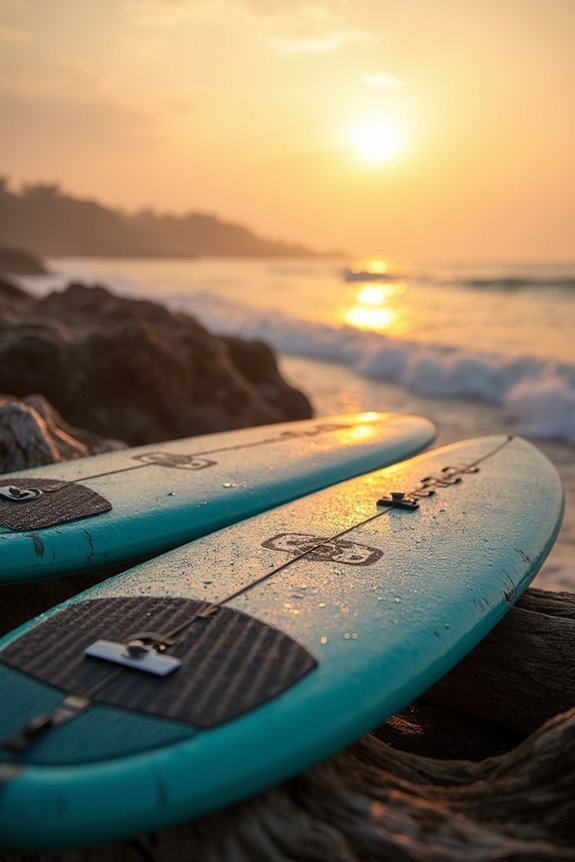
To effectively execute duck diving, it’s vital to reflect on the type of surfboard we use, as it greatly impacts our ability to perform the maneuver. Smaller boards with lower volume, such as shortboards, hybrids, or fish shapes, make duck diving much easier. In contrast, larger boards with high volume, like soft tops, are more buoyant and difficult to submerge.
Grip handling is also important. We should grip the rails about 2 to 2.5 feet below the nose, ensuring we achieve the right angle and leverage. Additionally, maintaining proper wax levels on our board helps prevent slipping during the dive. With the right board and grip, we can improve our duck diving performance remarkably. Choosing a board that aligns with our skill level and weight limits, such as beginner surfboards, can also enhance our overall surfing experience.
Technique and Execution Steps
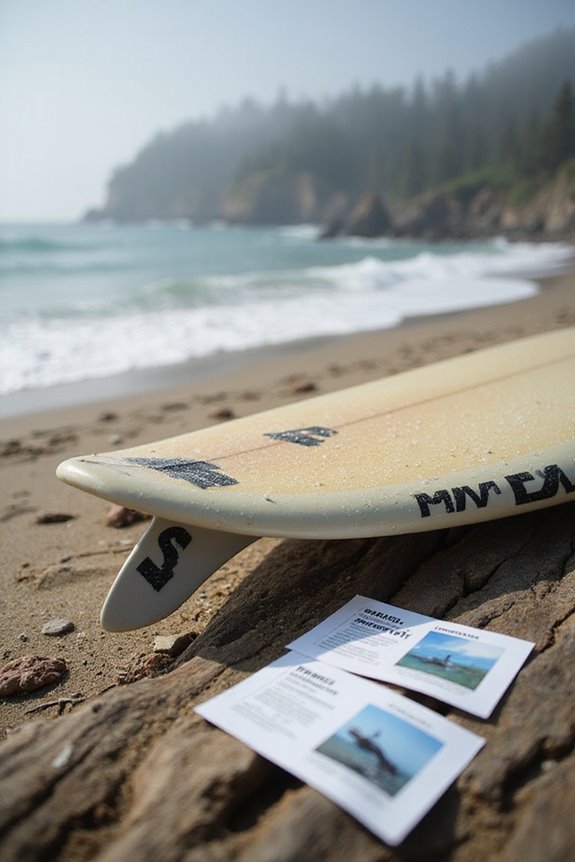
Mastering duck diving involves a series of precise movements that require practice and coordination. We start by positioning our bodies horizontally to the water surface, holding the surfboard rails near the nose, and taking a deep breath. Our body alignment must be perpendicular to the wave direction.
Next, we execute the submersion technique by pushing the board’s nose down with our upper body weight. Keeping our arms extended helps us leverage effectively. After the nose is submerged, we push the tail down using a knee or foot, maintaining momentum and stability.
As we arch our backs slightly, we create downward force, allowing us to follow the board underwater. Finally, we fin with controlled kicks to maintain our momentum until we’re past the wave. Understanding the importance of wetsuit maintenance can also enhance comfort during sessions, especially when practicing techniques like duck diving.
Timing and Positioning

Timing and positioning are essential elements of executing a successful duck dive. We should start the dive about one surfboard length away from the wave, ensuring we maintain speed. Timing adjustments are important; we need to begin just before the wave approaches, avoiding early or late starts.
In terms of positioning strategies, we must lie prone and horizontal on the board for control. When facing broken waves, we position the board’s nose deeper for stability. Aligning our body and board beneath the wave helps us reach the necessary depth quickly. Finally, we should use visual focus on a fixed underwater point to maintain direction as we dive, ensuring an efficient and effective maneuver beneath the wave. Additionally, understanding board size and weight is crucial for selecting the right surfboard to improve our duck diving skills.
Benefits and Challenges
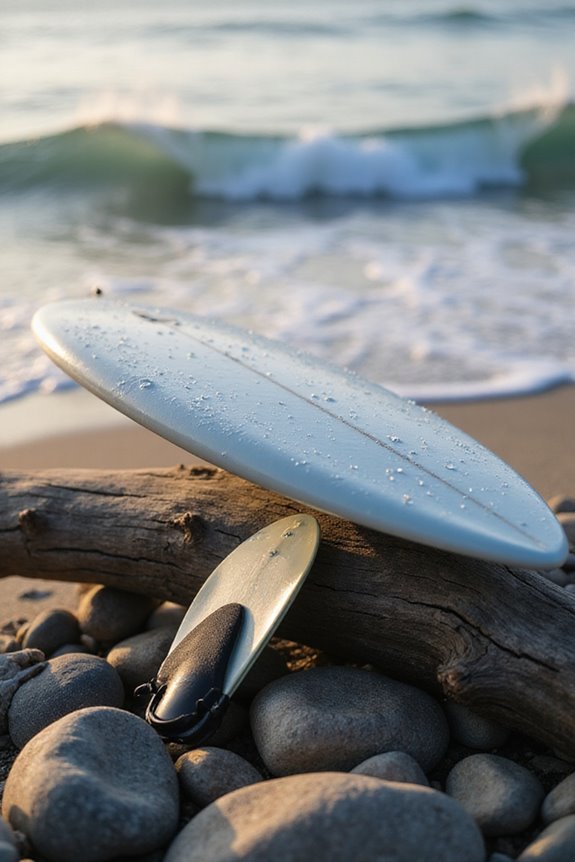
Understanding the benefits and challenges of duck diving helps us appreciate its role in surfing and freediving. Duck diving allows us to efficiently pass under breaking waves, conserving energy and oxygen. This technique enhances our control and safety, helping us avoid being caught in turbulent waters while improving our positioning to catch better waves.
However, mastering duck diving requires mental preparation and sufficient upper body strength. We face challenges like maintaining board balance, coordinating our movements, and managing timing to avoid the impact zone. Environmental factors, such as wave dynamics and water conditions, can complicate our efforts. Additionally, using the right equipment is vital; improper gear can hinder our efficiency and increase fatigue. Incorporating surfing apparel essentials like a well-fitted wetsuit can greatly enhance your performance during this technique.
Frequently Asked Questions
Can Beginners Learn Duck Diving Quickly?
Absolutely, beginners can learn duck diving quickly! With focused practice and beginner tips, we can refine our coordination and timing. Regular repetition helps us build confidence and efficiency, making the process smoother and more enjoyable.
What Surfboard Sizes Are Ideal for Duck Diving?
Like a skilled sailor steering through the waves, we find that ideal surfboards for mastering duck diving techniques are typically under 7 feet. Their lighter frames help us glide effortlessly beneath the tumultuous surface, ensuring smoother rides.
How Does Duck Diving Differ for Shortboards Versus Longboards?
When we consider shortboard dynamics, we see how easily they submerge under waves. In contrast, longboard challenges arise due to their buoyancy, requiring alternative techniques like the turtle roll to navigate breaking waves effectively.
Are There Any Safety Tips for Duck Diving?
Aren’t we all enthusiastic to stay safe while enjoying the waves? We should always use proper safety equipment and respect wave etiquette, ensuring our duck diving experience is both thrilling and secure for everyone involved.
How Can I Improve My Duck Diving Technique?
To improve our duck diving technique, we should focus on proper body positioning and mastering breathing techniques. By staying calm underwater and ensuring our movements are fluid, we’ll enhance our overall efficiency and control.

